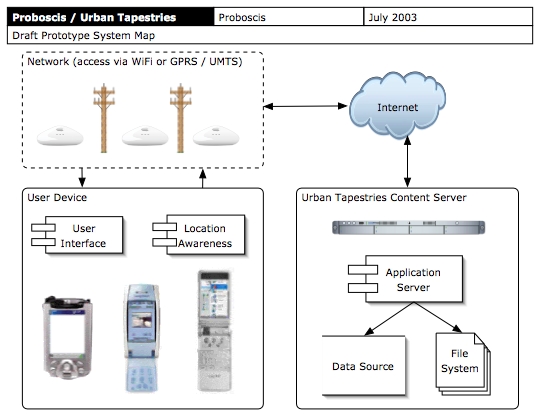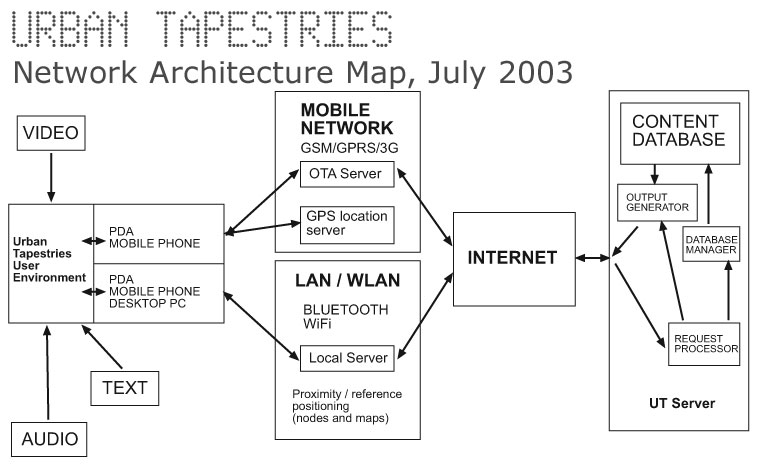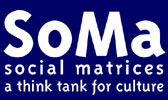
Proboscis is developing a series of experimental prototypes for Urban Tapestries to help explore and understand scenarios of use and the emergent possibilities that this new form of communication and marking of space implies.
The
Urban Tapestries system enables users to create a relationships between
geographic places via the creation of pockets and threads.
Pockets are the relationship a user makes to a specific geographic
place (with a granularity of 1 metre square) and contain the media the
user chooses to associate with that place (such as a story and/or audio
file and/or a picture).
Threads are the thematic relationships between pockets
and geographic places and can vary from the practical, 'Fair Trade Goods
Sold Here' to the personal, 'My Favourite Bars & Cafes'.
Prototype
2.0 (Spring 2005)
From Autumn 2004 Proboscis will begin Stage 3 of UT prototype development
to enhance the current functionality in support of the civil society experiments
we are developing for the Social Tapestries research programme. Prototype
2.0 will be include multi-platform UT clients running on PDAs and Symbian
mobile phones as well as having a web interface for remote authoring/browsing
from laptops and desktops.
UT
RSS Feeds & UT Web Browser (Autumn 2004)
Proboscis has created a Flash
Web Browser and location-based RSS
Feeds to make the system accessible to the general public. The RSS
feeds that allow people to subscribe to all new pockets on the
system, or to individual authors, or threads, or major towns
or local areas. The web browser is a graphical viewer for the UT system
content from our December 2003 and June 2004 trials, giving an insight
into the possibilities of spatial annotation using high-definition mapping.
Web
Browser :
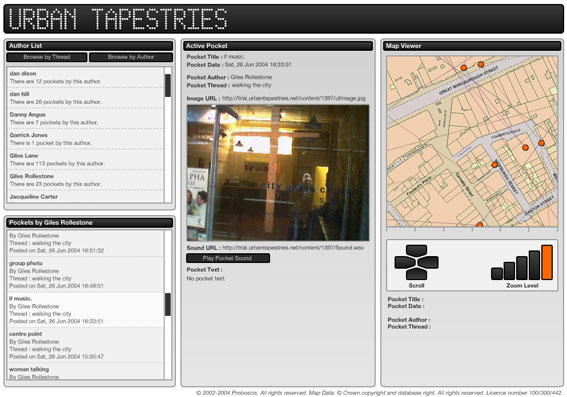
RSS Feed (in NetNewsWire on Mac OS X):
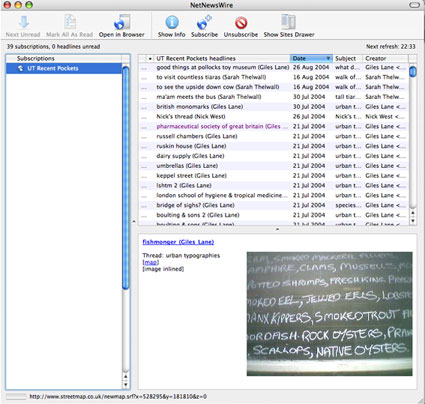
Prototype
1.1 (June 2004)
The second prototype was given a field trial in London during June 2004
with the aim of the trial being to begin to understand how people might
use the system over time. 15 participants were loaned Sony Ericsson P800s
and explored the system (covering a 3km square area of Central London)
for a period of 4 weeks each.
Proboscis has enhanced and optimised the system architecture (with map data again provided by Ordnance Survey) for use with Symbian UIQ smartphones (SonyEricsson P800/900s – with France Telecom R&D). The GPRS network access is being provided by Orange UK.
View a full-scale map of all the pockets and threads.
| Prototype 1.1 (Symbian smartphone) Screenshots | ||
| Login | Drifting | Early Filters |
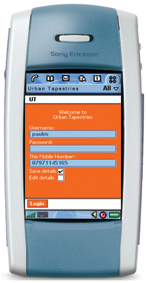 |
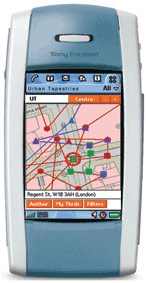 |
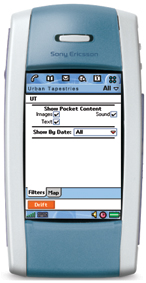 |
| Selecting Content | Entering Content | Zoomed Out View |
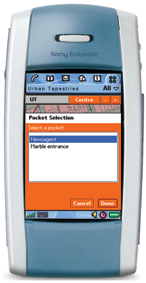 |
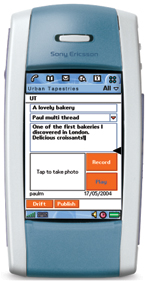 |
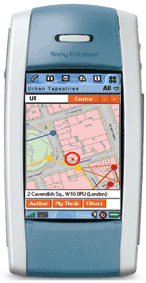 |
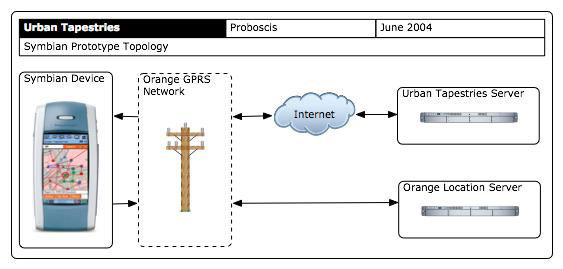
Prototype
1.0 (December 2003)
The first prototype had a live public trial in London during December
2003. The aim of the trial was to give people a taste of public authoring
using mobile and wireless devices.
Proboscis designed and built the system architecture (with map data provided by Ordnance Survey), and client application for wireless PocketPC PDAs (HP iPAQ 5450s). The 802.11b mesh network supporting the wireless iPAQs is Locustworld's MeshAP, with whose help Proboscis installed and maintained its own local WiFi mesh covering public spaces in Bloomsbury, London.
Proboscis
also researched and created sample content to populate the trial system,
as well as inviting a small group of people to create independent 'threads'
for the trial (Peter Cusack, Usman Haque, and Rob Rainbow). Participant
feedback
is available via the project weblog.
An online prototype of this version is available here.
| Prototype 1.0 (PocketPC PDA) Screenshots | ||
| Drifting | Authoring | |
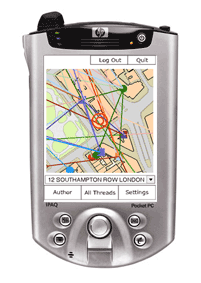 |
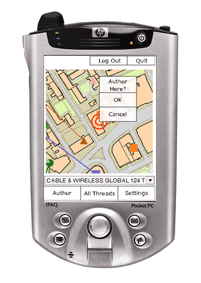 |
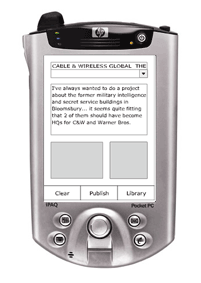 |
| Viewing Content | ||
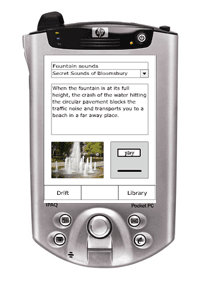 |
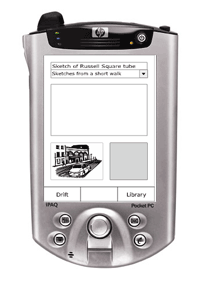 |
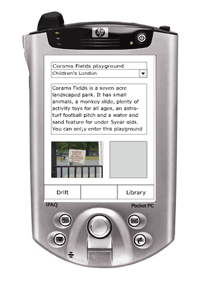 |
